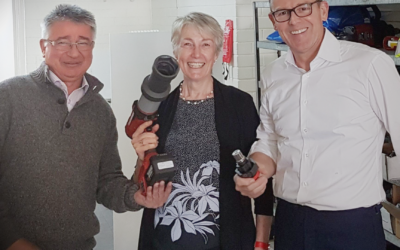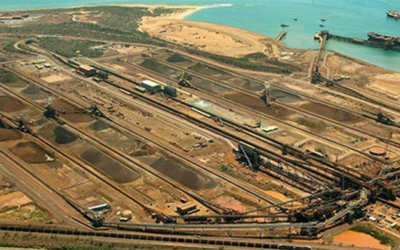What is HAVS?
Hand-Arm Vibration Syndrome, known as HAVS, is a very serious condition that is caused by vibration transferred to the hand and arm through the use of power tools, or other vibrating machinery. If left untreated, it can even result in finger or hand amputation.
No Australian jurisdiction currently has specific vibration regulations. However many jurisdictions in Australia mention vibration to varying degrees in their general regulations (for example in the Plant, Noise or Manual Handling chapters), compliance codes or codes of practices and guidance material.
In contrast, the European Parliament and the Council of the European Union issued a Directive in 2002 regarding the minimum health and safety requirements for workers exposed to vibration. The European action limit for WBV is 0.5 m/s2.
Who is at Risk?
The Safe Work Australia (SWA) fact sheet on HAVS states that the condition is “commonly experienced by workers who regularly use tools such as jackhammers, chainsaws, grinders, drills, riveters, and impact wrenches.” Clearly, this covers a wide range of workers in mining and mechanical maintenance disciplines.
How Vibration Causes Injury
Repeated exposure to high levels of vibration is known to cause injury to workers over time. They are classified into two general types: hand-arm and whole-body vibration. Hand-arm vibration syndrome (HAVS) is a known contributing factor to carpal tunnel syndrome. It causes direct injury to the fingers and hand, affecting feeling, dexterity, and grip. These injuries can be debilitating.
Safe Work Australia states that these symptoms occur because exposure to vibration can cause “disrupted circulation in the hand and forearm and/or damage to nerves and tendons, muscles, bones and joints of the hand and arm”. The damage caused by excessive exposure to vibration is irreversible, but that it is preventable with simple and cost-effective measures.
How to Reduce Exposure to Vibration Caused by Impact Wrenches
While there are some existing products on the market designed to minimise the effects of hand arm vibration, eliminating or reducing exposure to vibration is the most efficient and effective way of minimising the risk. Segnut is designed to do just that.
Its quick release mechanism significantly reduces the overall exposure to ‘rattle guns’ when installing and removing fasteners. Less time spent to release the nut, means less time spent using impact wrenches and therefore significantly reduces exposure to harmful vibrations. This is particularly important where the effects are cumulative, such as the job requires the maintainer to remove high quantities of fasteners, or there are seized nuts requiring the maintainer to spend longer periods on the impact wrench with tighter grip to loosen the nut.
Replacing hex nuts with Segnuts, vastly reduces overall vibration exposure time. One short, sharp burst with the ‘rattle gun’ will release the inner segments, even on seized nuts in under 5 seconds.
So, how much vibration exposure are you currently being exposed to?
According to Safe Work Australia, while there are no mandatory exposure levels in Australia, workers, their employers can be led by European mandatory requirements recommending that daily vibration exposure should remain below 2.5 m/s2averaged over an eight-hour day and never more than 5 m/s2 over an eight-hour day.
Many modern tools have a vibration magnitude rating (m/s2) that enables the determination of the level of vibration that users are subjected to during use. The UK HSE has a hand arm vibration calculator and ready reckoner check list that enables assessment of safe use.
If you would like further information on hand arm vibration syndrome, Safe Work Australia has the following publications:
- Workplace vibration guidance material;
- Guide to Measuring and Assessing Hand-arm vibration;
- Guide to managing risks of exposure to hand arm vibration
- Information Sheet: Whole body vibration; and
- Information Sheet: Hand arm vibration.
For more specific information on Segnut’s applications for Ground Engaging Tools (GET), Wear Liner Change-out or Conveyer Maintenance, or to learn how we can assist you with safety or maintenance productivity in your particular operations, please contact us today.





0 Comments